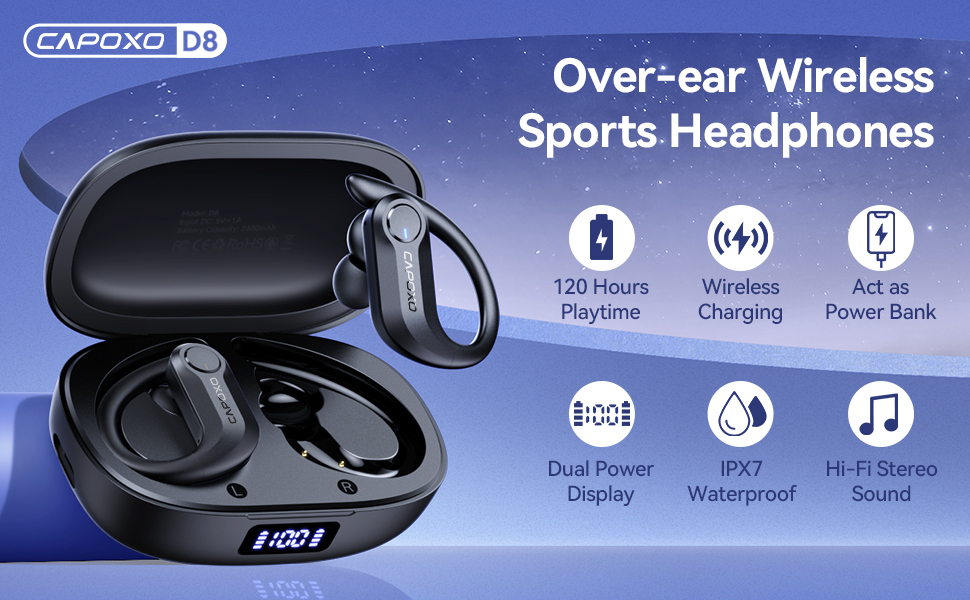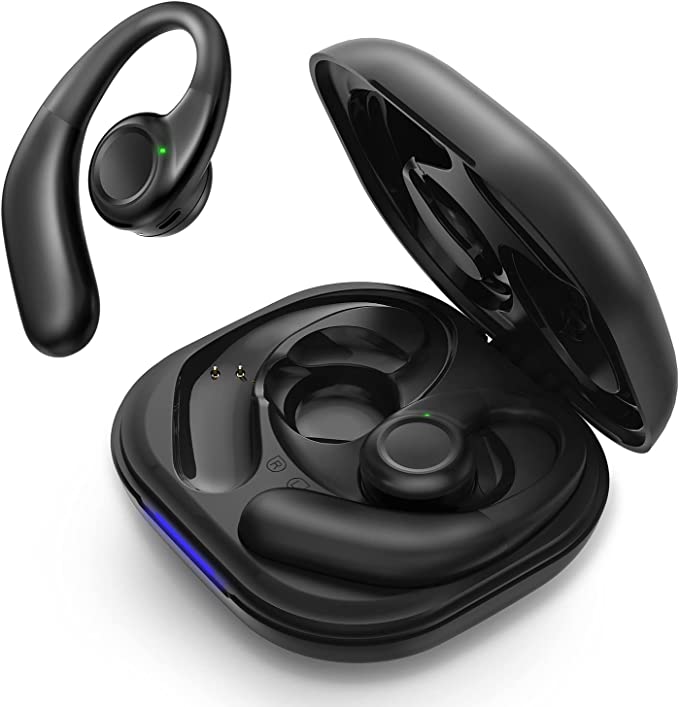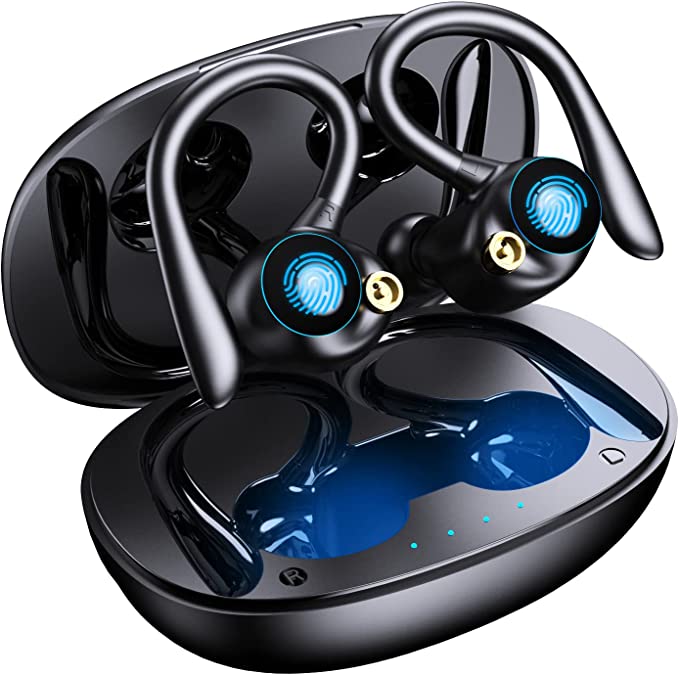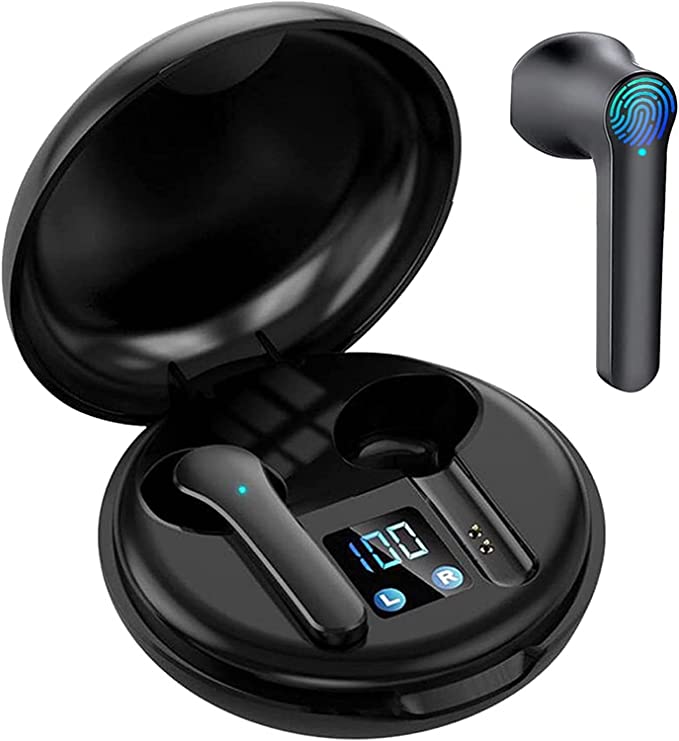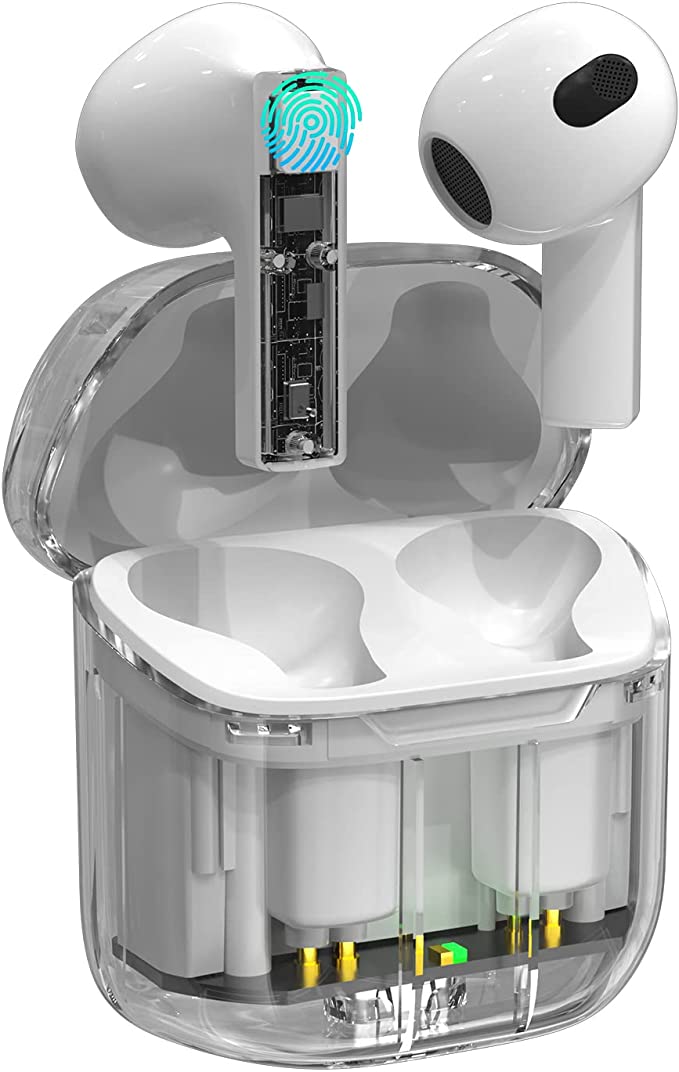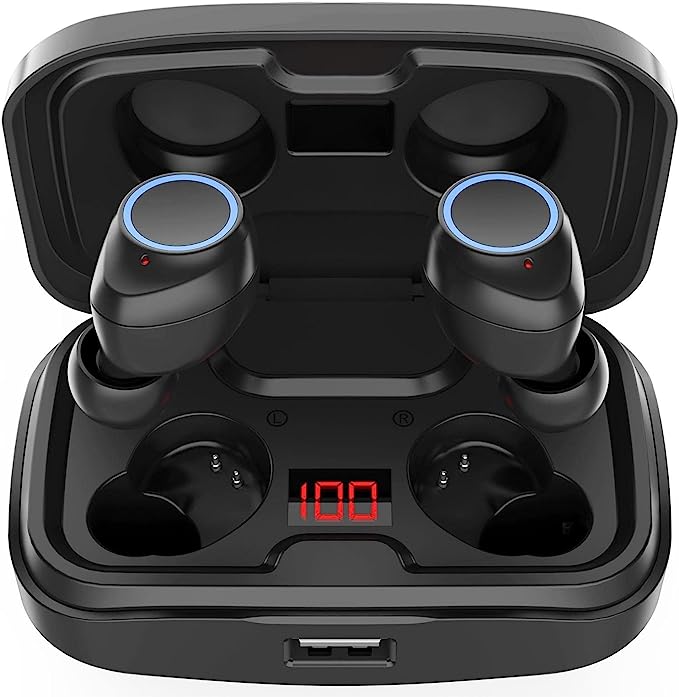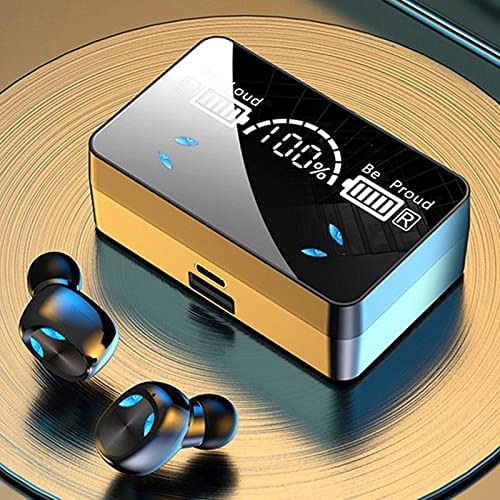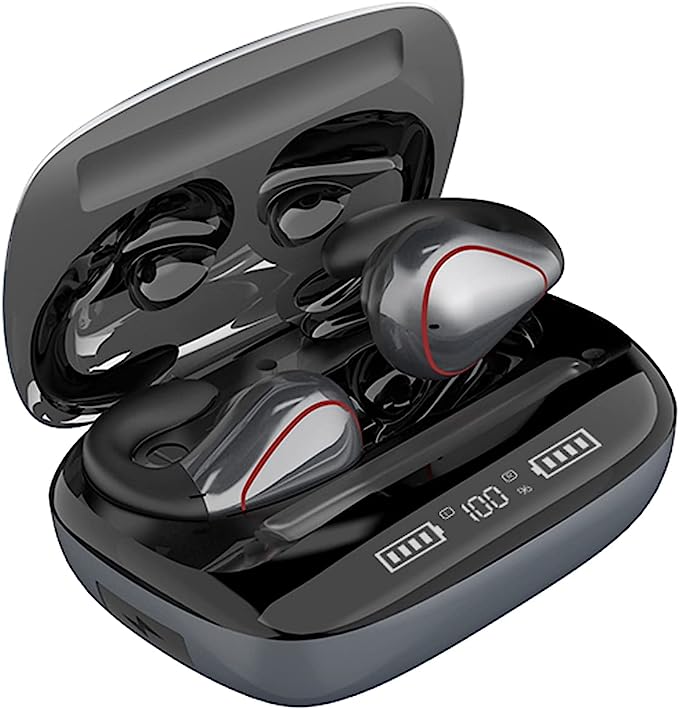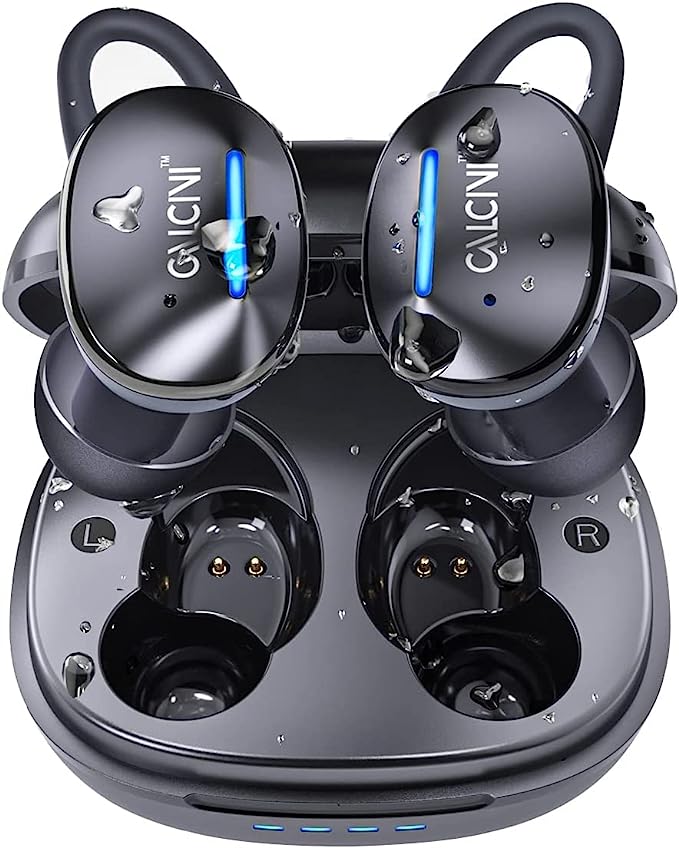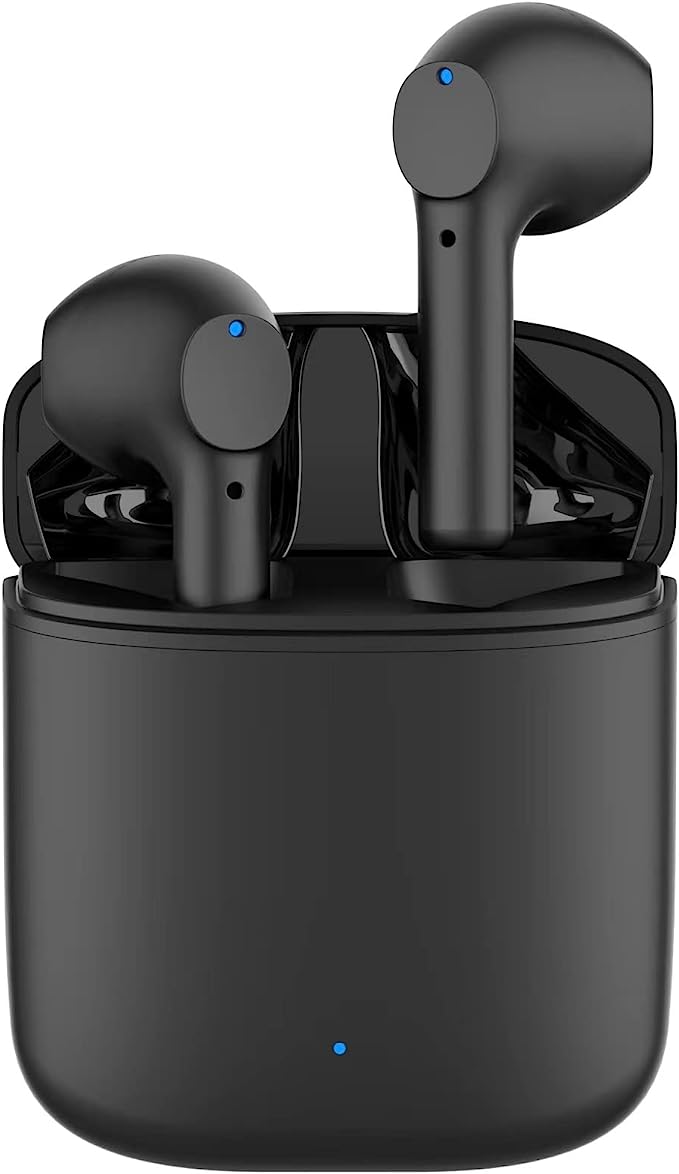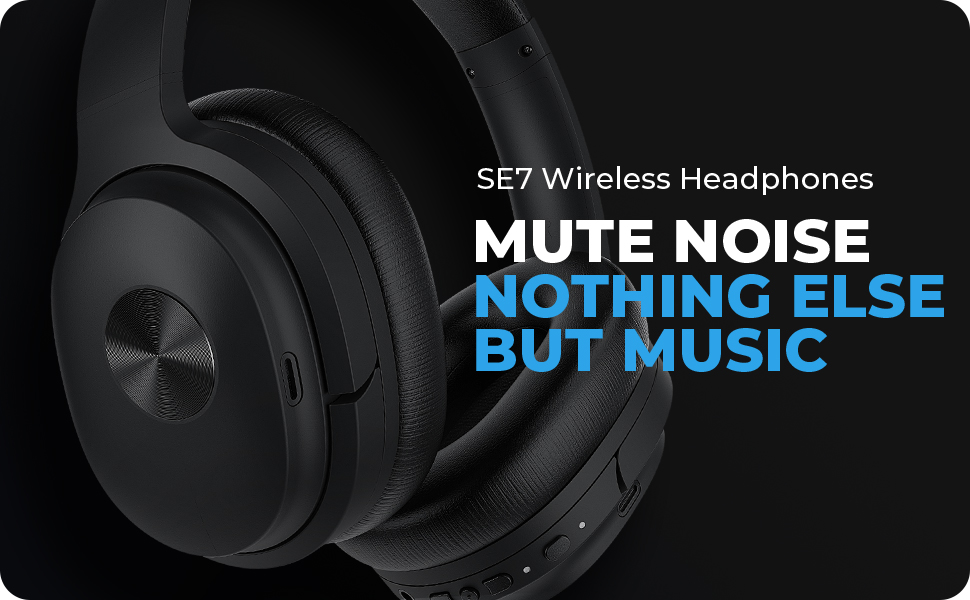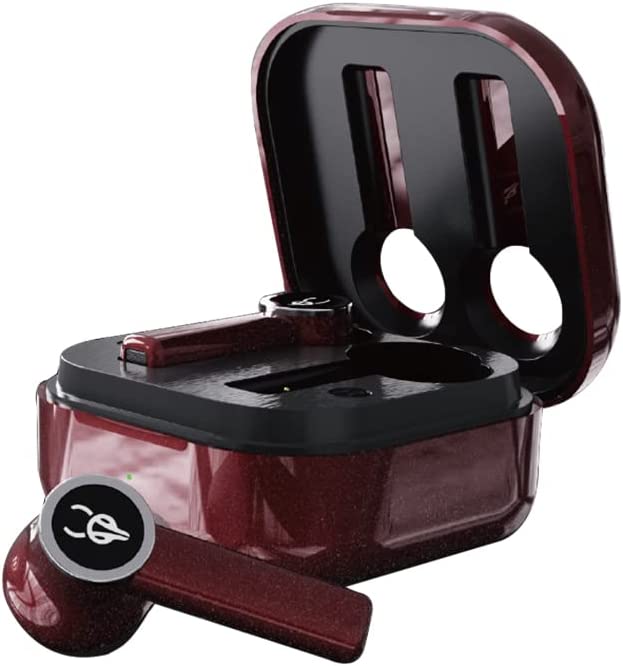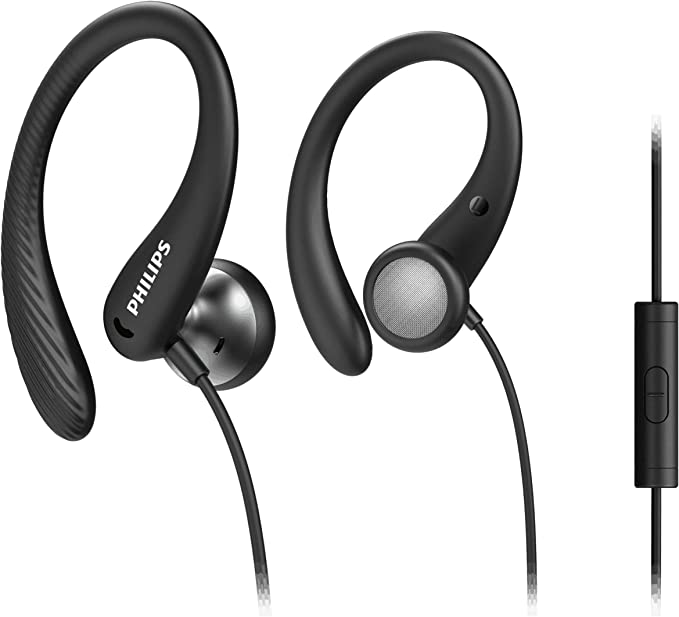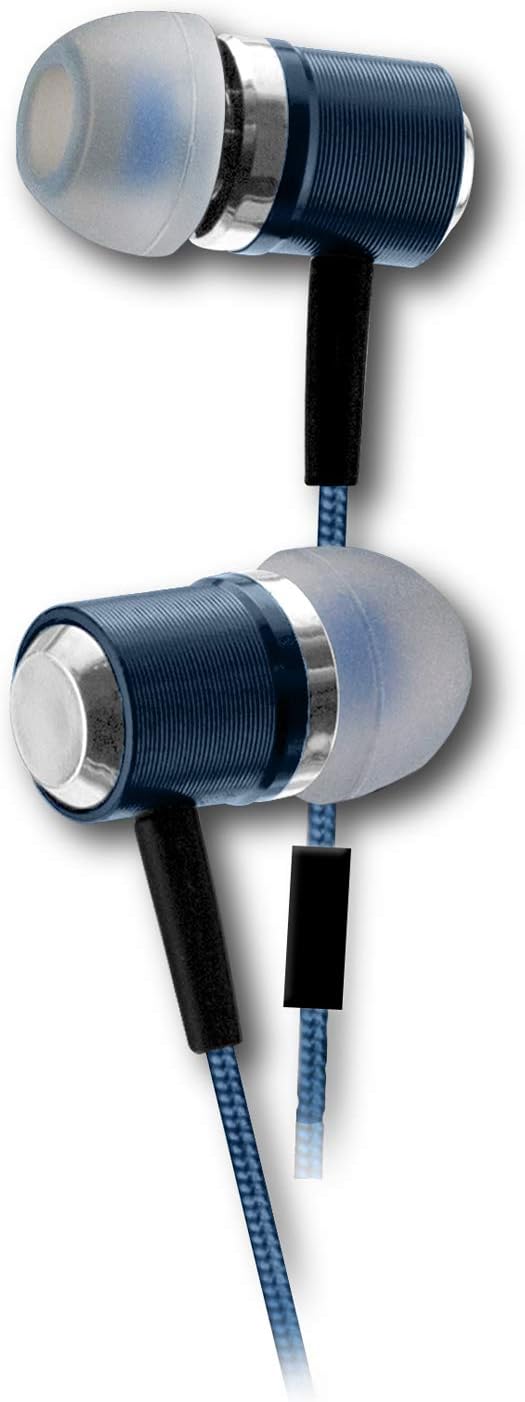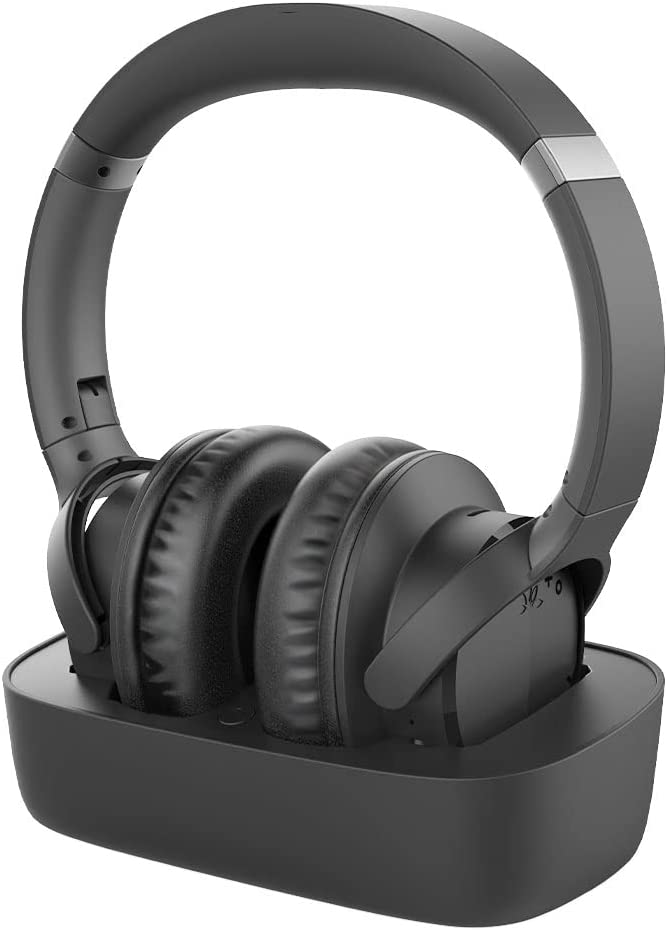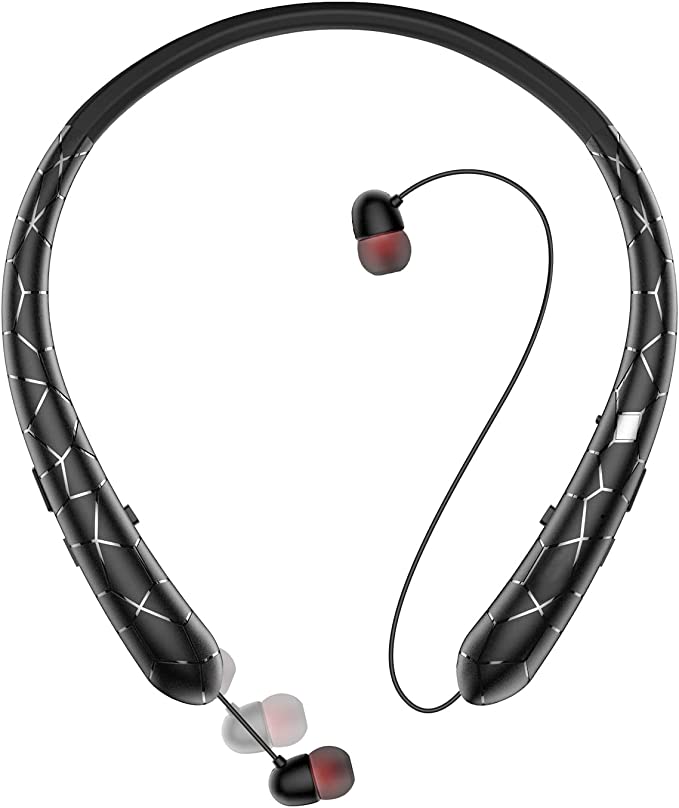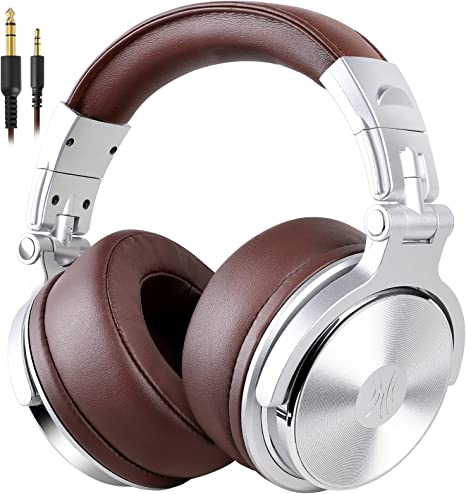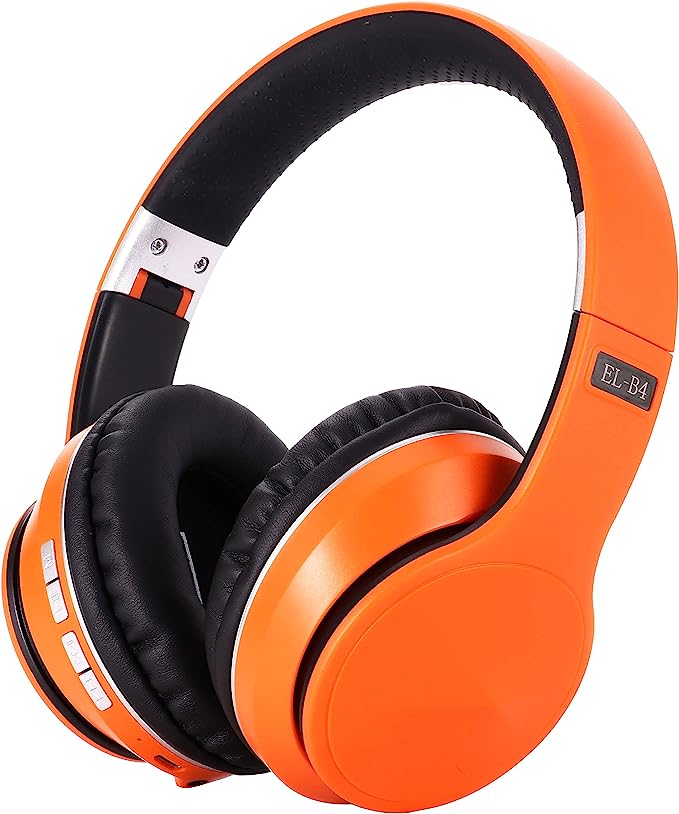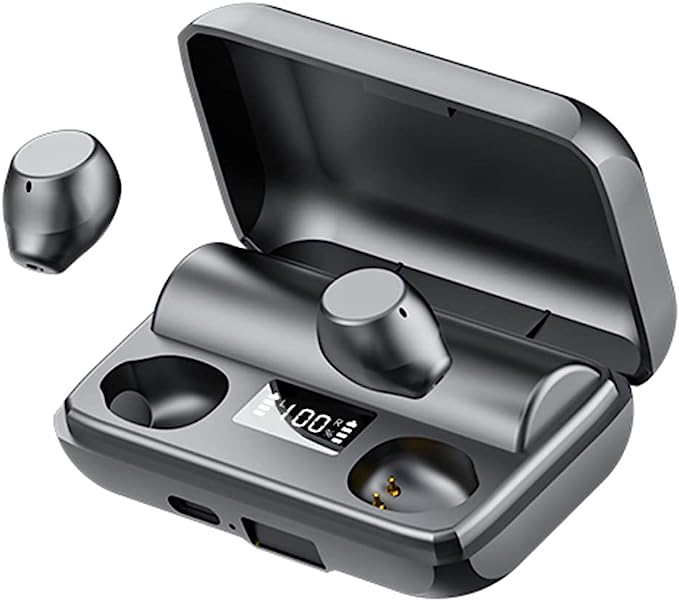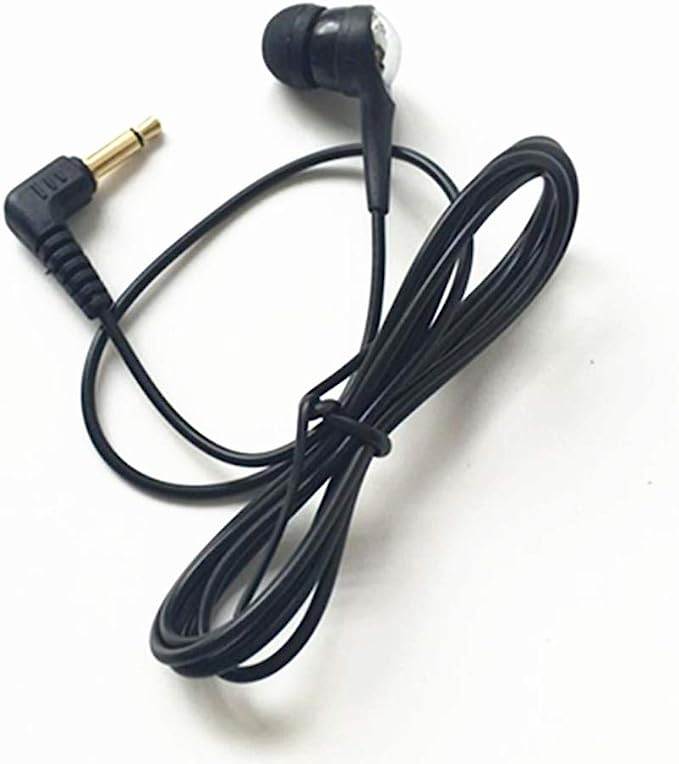Skullcandy Sesh Evo: Your Reliable Wireless Earbuds for Everyday Life
Update on March 20, 2025, 2:34 p.m.
Wireless earbuds. They’re everywhere. From the bustling city streets to the quiet solitude of a home office, those tiny, untethered audio companions have become ubiquitous. But have you ever stopped to think about the remarkable technology packed inside those little buds? We often take them for granted, experiencing the occasional frustration of a dropped connection or a drained battery, without truly appreciating the intricate dance of radio waves, digital signals, and clever engineering that makes wireless audio possible. Let’s take a closer look, using the Skullcandy Sesh Evo as our guide.

A Brief History of Untethered Sound
The quest for wireless audio isn’t new. It predates the digital age, stretching back to the early days of radio. Think about it: radio itself is a form of wireless audio transmission. Early experiments with transmitting sound without wires, often involving bulky equipment and crackling static, laid the groundwork for the sleek, pocket-sized devices we use today. The invention of the transistor in the mid-20th century was a pivotal moment, allowing for the miniaturization of electronics, paving the way for portable radios and, eventually, wireless headphones.
The Bluetooth Revolution (and its Challenges)
The real game-changer, of course, was Bluetooth. Developed in the late 1990s, Bluetooth was designed as a short-range wireless communication standard, initially envisioned for connecting mobile phones to headsets. The name itself is a nod to Harald Bluetooth, a 10th-century Danish king who united various tribes – a metaphor for Bluetooth’s ability to connect disparate devices.
Early versions of Bluetooth, while revolutionary, were far from perfect. Anyone who used a Bluetooth headset in the early 2000s remembers the frequent dropouts, the limited range (often just a few feet), and the significant drain on battery life. These issues stemmed from several factors, including interference from other devices operating on the same 2.4 GHz frequency band (like Wi-Fi routers and microwaves), less sophisticated error correction, and less efficient power management.
Bluetooth 5.0: A Deeper Dive
The Skullcandy Sesh Evo utilizes Bluetooth 5.0, a major leap forward from those early iterations. But what makes 5.0 so much better? It’s not just a bigger number; there are substantial technical improvements under the hood.
One key enhancement is reduced interference. Bluetooth 5.0 employs more sophisticated frequency-hopping techniques. Imagine a crowded room where everyone is trying to talk at once. Older Bluetooth versions were like everyone shouting at the same time, making it hard to hear. Bluetooth 5.0 is like assigning each conversation a different time slot, quickly switching between them so everyone gets a chance to speak clearly. This “adaptive frequency hopping” minimizes collisions with other signals, resulting in a more stable connection, especially in environments with lots of wireless activity.
Another crucial improvement is increased range. While the theoretical maximum range of Bluetooth 5.0 is significantly higher than previous versions, real-world performance is affected by obstacles and interference. Still, you can generally expect a more reliable connection at greater distances with Bluetooth 5.0, allowing you to move around your home or office with fewer dropouts.
Power efficiency is also significantly improved. Bluetooth 5.0 uses less energy for both transmitting and receiving data. This translates to longer battery life for your earbuds and your phone.
To understand how Bluetooth enables different functionalities, we need to talk about profiles. Think of profiles as specialized languages within the Bluetooth protocol. The Sesh Evo, like most wireless earbuds, supports several key profiles:
- A2DP (Advanced Audio Distribution Profile): This is the foundation for streaming high-quality stereo audio. It defines how audio data is packaged and transmitted from your phone (or other source device) to your earbuds.
- AVRCP (Audio/Video Remote Control Profile): This allows you to control playback (play, pause, skip tracks, adjust volume) directly from your earbuds using the button controls.
- HFP (Hands-Free Profile): This enables you to make and receive phone calls through your earbuds, using the built-in microphone.
- HSP (Headset Profile): This is a more basic profile for voice calls, often used in older devices.
Now, let’s talk about codecs. A codec is essentially a digital audio encoder and decoder. When you stream music wirelessly, the audio data needs to be compressed to fit within the available Bluetooth bandwidth. The codec on your phone encodes (compresses) the audio, and the codec in your earbuds decodes (decompresses) it.
The most common codec is SBC (Subband Coding). It’s the mandatory codec for all Bluetooth devices, ensuring compatibility. SBC is decent, but it’s not the highest-fidelity option. The Sesh Evo likely only supports SBC. While some product listings suggest the possibility of AAC (Advanced Audio Coding), there’s no definitive confirmation from Skullcandy. AAC is a more efficient codec than SBC, offering better sound quality at similar bitrates, and it’s particularly beneficial for Apple devices, which are optimized for AAC. The absence of higher-quality codecs like aptX (common on Android devices) is a trade-off for the Sesh Evo’s affordability.
Let us talk more about the properties of radio wave. Bluetooth utilizes radio waves in the 2.4 GHz ISM (Industrial, Scientific, and Medical) band. These waves, like all electromagnetic waves, travel at the speed of light. However, their propagation can be affected by various factors:
- Obstacles: Walls, furniture, and even the human body can absorb or reflect radio waves, weakening the signal.
- Interference: Other devices operating on the same frequency band (Wi-Fi routers, microwaves, etc.) can create interference, disrupting the Bluetooth signal.
- Distance: The signal strength decreases with distance, following the inverse square law.
Bluetooth 5.0’s improved range and interference mitigation techniques help overcome these challenges, but they can’t eliminate them entirely.

Powering Your Day: Understanding Battery Life
Battery life is a constant concern with wireless devices. The Sesh Evo boasts a total battery life of 24 hours. This is a combined figure: 5 hours from the earbuds themselves on a single charge, and an additional 19 hours provided by the charging case.
The charging case is more than just a convenient storage container; it’s essentially a portable power bank for your earbuds. It contains its own lithium-metal battery, which recharges the earbuds when they’re placed inside. The 3-hour charging time refers to the time it takes to fully charge both the earbuds and the charging case.
Lithium-metal batteries, in general, offer a higher energy density compared to older battery technologies like nickel-cadmium (NiCd) or nickel-metal hydride (NiMH). This means they can store more energy in a smaller, lighter package – crucial for compact devices like earbuds. However, specific details about the Sesh Evo’s battery chemistry and capacity are not readily available from the manufacturer.

Finding Your Lost Buds: The Magic of Tile
One of the most frustrating aspects of wireless earbuds is their tendency to disappear. That’s where Tile technology comes in. Tile is a company that specializes in Bluetooth trackers – small devices you can attach to your keys, wallet, or anything else you’re prone to losing. The Sesh Evo earbuds have Tile functionality built-in.
How does it work? It’s surprisingly simple, yet ingenious. Each Tile-enabled device, including your Sesh Evo earbuds, periodically broadcasts a unique Bluetooth signal. When your earbuds are within Bluetooth range of your phone, the Tile app can detect this signal and “see” them. If you mark your earbuds as lost, the app will show you their last known location on a map – the last place and time your phone was connected to them.
But what happens if your earbuds are out of range? This is where the Tile network comes into play. The Tile app on any Tile user’s phone can anonymously detect any Tile device, including your lost earbuds. If another Tile user walks past your lost earbuds, their phone will silently detect the signal and update the location in the Tile cloud. You’ll then receive a notification with the updated location. It’s a clever system that leverages the power of a community to help people find their lost belongings.

Built for Life: IP55 Protection Explained
The “IP” in IP55 stands for “Ingress Protection.” It’s an international standard that defines how well a device is protected against intrusion from solid objects (like dust) and liquids (like water). The first digit refers to solid particle protection, and the second digit refers to liquid protection.
In the case of IP55:
- The first “5” means the Sesh Evo is protected against dust. Specifically, it’s “dust-protected,” meaning that dust can still enter, but not in sufficient quantities to interfere with the operation of the earbuds.
- The second “5” means the Sesh Evo is protected against water jets. This means it can withstand water sprayed from a nozzle (6.3 mm) from any direction without harmful effects.
This doesn’t mean the Sesh Evo is waterproof. You shouldn’t submerge them in water or wear them while swimming. But it does mean they can handle sweat, rain, and splashes without issue, making them suitable for workouts and outdoor activities.
Sound Matters: EQ and Audio Quality
While the Sesh Evo isn’t marketed as an audiophile-grade earbud, it offers different EQ (equalization) modes to tailor the sound to your preference. EQ is the process of adjusting the balance of different frequency components in an audio signal.
Think of a sound wave as a complex mixture of different frequencies, from low bass tones to high treble notes. Our ears perceive these different frequencies differently. A “flat” EQ means that all frequencies are reproduced at roughly the same level. However, different types of audio content often benefit from different EQ settings.
The Sesh Evo offers modes for Music, Movies, and Podcasts. The Music mode likely provides a balanced sound signature, suitable for a wide range of genres. The Movie mode might boost the bass and treble to create a more cinematic experience. The Podcast mode might emphasize the midrange frequencies, where human speech is most prominent, to improve clarity.
One Button, Many Functions: The Simplicity of Control
The Sesh Evo keeps things simple with a single button on each earbud. But don’t let that simplicity fool you; those buttons can perform a variety of functions depending on how long you press them and how many times you press them.
While the exact control scheme can be found in the user manual, typical single-button controls include:
- Single press: Play/pause music, answer/end calls.
- Double press: Skip to the next track (often on the right earbud) or go back to the previous track (often on the left earbud).
- Triple press: Activate a voice assistant (like Siri or Google Assistant).
- Press and hold: Adjust volume (often holding the right earbud increases volume, and holding the left earbud decreases it) or power on/off.
This multi-function approach allows for a good range of control without cluttering the earbuds with multiple buttons.
The Freedom of One: Single-Earbud Use
The Sesh Evo allows you to use either the left or right earbud independently. This might seem like a minor feature, but it offers several advantages:
- Situational Awareness: When you need to be aware of your surroundings (e.g., while walking or cycling), using a single earbud allows you to hear ambient sounds more easily.
- Extended Battery Life: If you’re only using one earbud, the other can remain in the charging case, effectively doubling your listening time.
- Phone Calls: Some people prefer to take calls with just one earbud, finding it more natural and less isolating.
The Future of Wireless Audio
The technology inside the Sesh Evo, while impressive, is only a snapshot of where wireless audio is heading. Future advancements promise even more exciting possibilities:
- Lower Latency: Reducing the delay between the audio source and the earbuds is crucial for gaming and video applications. New Bluetooth codecs and technologies are constantly working to minimize latency.
- Spatial Audio: Creating a more immersive, three-dimensional sound experience.
- Active Noise Cancellation (ANC): While not present in the Sesh Evo, ANC is becoming increasingly common in wireless earbuds, using microphones and clever signal processing to block out external noise.
- Biometric Sensors: Integrating sensors into earbuds to track heart rate, body temperature, and other health data.
- AI Integration: Using artificial intelligence to personalize sound profiles, optimize battery life, and even translate languages in real-time.

Conclusion
The Skullcandy Sesh Evo, while a budget-friendly option, is a testament to how far wireless audio technology has come. It’s a reliable, everyday companion that packs a surprising amount of technology into a small, affordable package. By understanding the principles behind Bluetooth 5.0, Tile tracking, IP55 protection, and other features, you can appreciate the ingenuity of these little devices and make more informed choices about your own audio gear. They aren’t just earbuds; they’re tiny marvels of engineering.




